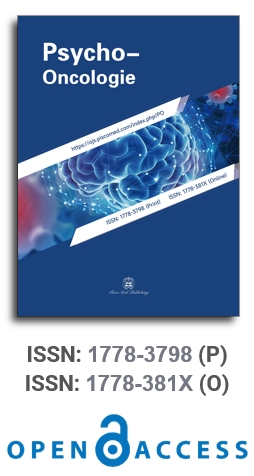Predictive nursing to reduce PICC-related thrombosis and psychological distress in cancer patients
by Hongyun Li, Hua Zhao, Ye Wang, Yuqi Liu, Min Wang, Furong Zeng, Yajin Xue, Yanling Shao
Psycho-Oncologie
, Vol.19, No.4, 2025;
74 Views
This study investigated the risk factors for venous thrombosis following peripherally inserted central venous catheter (PICC) placement in cancer patients and evaluated the impact of predictive nursing on clinical and psychological outcomes. From August 2021 to July 2023, 136 cancer patients who developed PICC-related venous thrombosis were included as the observation group, and 136 patients without thrombosis served as controls. Clinical data were retrospectively analyzed, and univariate and multivariate logistic regression were performed to identify independent risk factors. The observation group further received predictive nursing, while the control group received routine nursing. Knowledge of catheter care, hemodynamic parameters, inflammatory and nutritional indicators, emotional status, complications, and nursing satisfaction were compared between groups. Univariate analysis showed significant differences in age, diabetes, catheterization duration, puncture site, platelet-promoting drug use, and prophylactic anticoagulation ( P < 0.05). Logistic regression identified age ≥60 years (OR = 4.065), diabetes (OR = 5.185), catheterization ≥14 days (OR = 5.652), cephalic vein puncture (OR = 6.165), platelet-stimulating drugs (OR = 5.859), and absence of prophylactic anticoagulation (OR = 11.025) as independent risk factors ( P < 0.01). Compared with routine nursing, predictive nursing resulted in higher satisfaction, improved beliefs, knowledge, and behaviors, better hemodynamic stability, lower TNF-α and IL-1β levels, enhanced nutritional indicators, reduced anxiety and depression, and fewer complications ( P < 0.05). Conclusion: Advanced age, diabetes, extended catheterization, cephalic vein puncture, platelet-stimulating drugs, and lack of prophylactic anticoagulation increase thrombosis risk. Predictive nursing effectively improves emotional state, hemodynamics, nutritional status, and safety in cancer patients undergoing PICC-based chemotherapy.



 Open Access
Open Access